An Introduction to Chiang Mai’s Burning Season
The infamous Chiang Mai burning season. If you’ve been to Chiang Mai before, chances are you’ve heard whispers, or perhaps warnings about it. But just how bad is it, really?
Some call it an apocalyptic nightmare, while others dismiss it as an overblown inconvenience. So, what’s the truth?
Chiang Mai’s burning season is more than just a topic of debate; it’s a yearly event that can drastically alter your experience of this beloved city.
From choking air pollution and deserted streets to frustrated locals and expats planning their seasonal escape, the impacts are real. But here’s the thing: the burning season doesn’t have to ruin your plans.
In this article, we’ll unpack everything you need to know, why it happens, when it peaks, how it affects daily life, and most importantly, how to cope or escape if needed.
So stick around, and by the end, you’ll not only have your questions answered but also feel prepared to make informed decisions about tackling Chiang Mai’s burning season head on.
When is Burning Season in Chiang Mai?
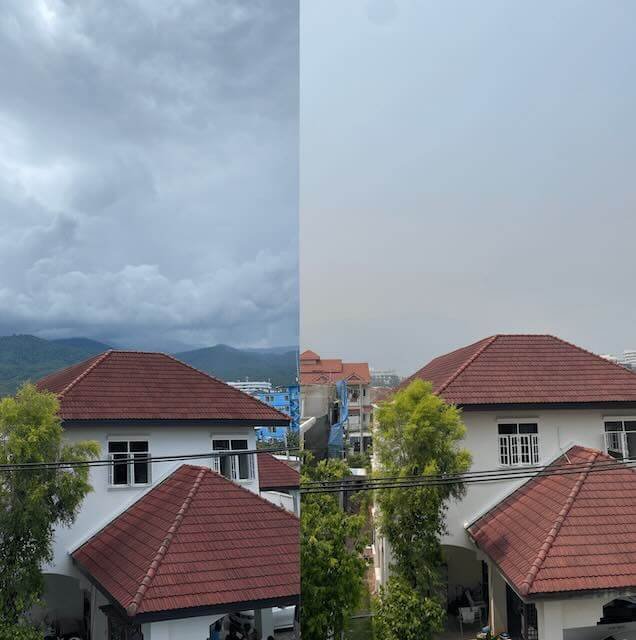
Chiang Mai’s burning season is like clockwork, arriving each year to disrupt the city’s otherwise idyllic lifestyle.
If you’re planning to live or visit here, knowing when it strikes and how to prepare can make all the difference.
General Timing of Burning Season
The burning season usually begins creeping in by late February, hits its suffocating peak in March, and gradually subsides by mid April.
While these dates hold true most years, variations can occur due to shifts in agricultural schedules, unpredictable weather, or increased regional fires.
March, however, consistently stands out as the most polluted month when the air can feel more like a blanket of smoke than a breath of fresh air. If you enjoy seeing the mountains of Chiang Mai then this is the month to avoid for sure.
For more information on the seasons of Chiang Mai check out our weather guide.
Historical Air Quality Records for Chiang Mai

The numbers don’t lie, recent years have painted a troubling picture of Chiang Mai’s burning season, with air quality consistently reaching hazardous levels.
In March 2023, Chiang Mai recorded an AQI of over 300, placing it firmly in the “hazardous” category and making the air dangerous for everyone, regardless of age or health status.
This wasn’t an isolated incident; in 2021, the AQI during the peak burning season also regularly hovered between 250 and 300, with some days exceeding 400 in certain areas.
Similarly, 2020 saw the city rank among the most polluted in the world during March, as heavy agricultural burning across the region pushed PM2.5 levels to extreme highs.
These PM2.5 particles, tiny yet deadly pollutants small enough to lodge deep into your lungs, routinely soar well above the World Health Organization’s recommended safe limit of 25 µg/m³ during this time. In 2019, for example, levels often reached 150 µg/m³ or higher, six times the WHO threshold.
While some years are worse than others, unpredictability is a hallmark of the burning season.
Factors like agricultural cycles, weather patterns, and cross border burning from Myanmar and Laos all play a role, leaving no reliable way to forecast the severity of the upcoming season.
What’s clear from the data is this: the burning season poses significant health risks, and planning ahead is crucial to minimize exposure and its potential impacts.
Monitoring Air Quality in Chiang Mai
To survive, or avoid, the burning season, staying informed is your best weapon.
Tools like AirVisual allow you to track real time air quality levels. They even offer health advice tailored to current conditions.
As a general rule, if you’re considering a trip to Chiang Mai, it’s best to steer clear from late February to mid April unless you’re fully equipped with strategies to combat the pollution inside your home.
Pro Tip: If you’re already in Chiang Mai, AirVisual app will help you decide whether it’s safe to step outside or better to hunker down indoors with an air purifier.
Effects of Burning Season Pollution on Your Health

When the burning season rolls into Chiang Mai, the impact goes beyond hazy skies and a few sneezes. The health effects of prolonged exposure to the season’s notorious PM2.5 pollution are both serious and far reaching.
Here’s what you need to know to protect yourself.
Physiological Effects of Bad Air Quality
Let’s start with the physical toll.
The tiny PM2.5 particles are small enough to penetrate deep into your lungs and even enter your bloodstream. This can trigger a range of issues, from coughing and shortness of breath to more severe conditions like cardiovascular strain, lung inflammation, and respiratory illnesses.
For those already prone to health issues, such as asthma or Chronic Obstructive Pulmonary Disease (COPD), the burning season can act as a dangerous accelerant, intensifying symptoms and increasing the likelihood of hospital visits.
Even for healthy individuals, prolonged exposure raises the risk of developing chronic conditions over time with each years exposure adding to that risk.

We drink a lot of coffee. When you buy something using links on our site, we may earn an affiliate commission to pay for that coffee at no extra cost to you.
Psychological Effects of Bad Air Quality
Air pollution doesn’t just hurt your lungs; it can weigh heavily on your mind too.
Studies link prolonged exposure to high pollution levels with increased rates of anxiety, stress, and depressive symptoms. And the enforced lifestyle changes, like staying indoors for days on end, can amplify feelings of isolation and restlessness, especially for those unaccustomed to limited mobility.
The psychological impact is particularly notable among expats and travelers who often rely on Chiang Mai’s outdoor cafes, temples, and natural beauty to recharge. Being cooped up during what’s usually the city’s warm and vibrant season can leave you feeling frustrated and disconnected.
Research Insights into Air Pollution
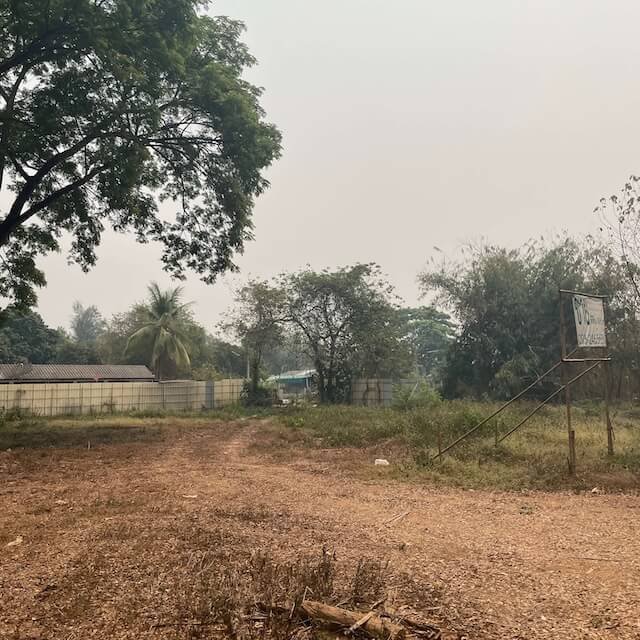
The World Health Organization (WHO) recommends keeping PM2.5 exposure below 25 µg/m³ to minimize health risks.
During Chiang Mai’s burning season, however, PM2.5 levels often surge past 150 µg/m³, and can even exceed 300 µg/m³ on the worst days. That’s over six times the safe limit, pushing air quality into hazardous territory.
This isn’t just a number, it’s a reminder of the potential health costs of ignoring the dangers of burning season. Whether you’re a long term resident or a short term visitor, understanding these risks and taking proactive measures can make all the difference in protecting your physical and mental well being.
Pro Tip: If you start feeling symptoms like persistent coughing, tightness in your chest, or heightened anxiety, don’t hesitate to seek medical advice. Investing in your health now can save you from bigger issues later.
Causes of Burning Season in Chiang Mai
To understand Chiang Mai’s burning season, you need to see it as more than just an unfortunate event, it’s the result of a perfect storm of human practices, natural geography, and modern development.
Let’s break down the culprits behind the haze.

Agricultural Practices – Crop Burning
At the heart of the burning season lies an age old farming method: slash and burn agriculture.
Farmers burn rice stubble and crop residue to clear their fields for the next planting season, a cost effective technique that’s hard to replace in rural economies.
But this practice, while practical for farmers, releases massive amounts of smoke and fine particulate matter into the atmosphere.Adding to the problem, much of the pollution that chokes Chiang Mai isn’t even generated locally.
Cross border agricultural burning in neighboring Myanmar and Laos contributes heavily to the seasonal haze. Chiang Mai, as part of a broader regional ecosystem, often bears the brunt of these activities.
Chiang Mai’s Geographical Challenges
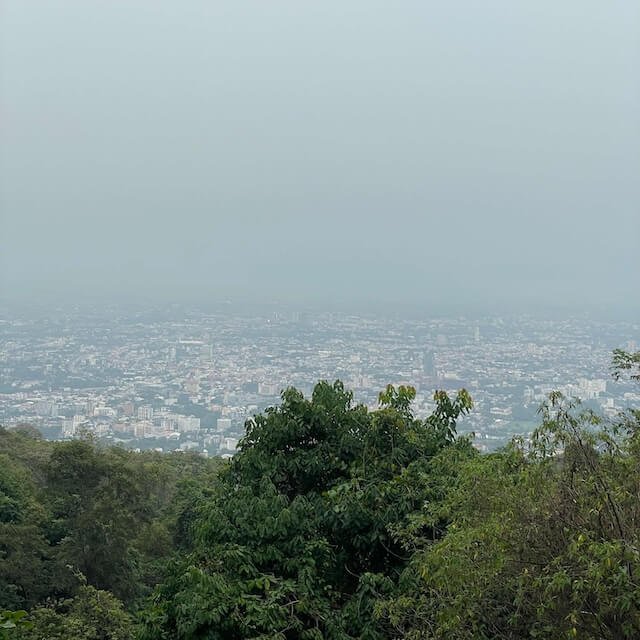
Chiang Mai’s beautiful mountains, which usually provide a stunning backdrop to the city, turn into a disadvantage during the burning season.
The city sits in a valley surrounded by hills, creating what’s known as a “bowl effect.” This natural formation traps smoke and pollutants, preventing them from dispersing and allowing concentrations to build up over weeks.
Even a slight shift in wind direction or rainfall could provide relief, but during the dry months of February through April, nature offers little reprieve.
Urban Contributions and General Pollution
Chiang Mai’s rapid growth over the years has also added to the burning season’s woes.
With urbanization comes increased vehicle emissions, construction dust, and industrial activity, all of which exacerbate the already dire air quality.
While these contributions may not be the primary drivers of the haze, they certainly intensify its effects, especially in densely populated areas of the city.
A Complex Problem with No Simple Fix
The burning season is a confluence of cultural traditions, economic realities, and environmental factors. Addressing it requires solutions that balance the needs of local farmers, urban residents, and neighboring regions.
For now, though, understanding these causes is the first step to adapting and preparing yourself for the smoky months ahead.
Pro Tip: If you’re staying in Chiang Mai during the burning season, keep an eye on regional pollution trends as well. Air quality apps often highlight cross border contributions, giving you a clearer picture of when conditions might improve, or worsen.
First Hand Accounts of Burning Season
No guide to Chiang Mai’s burning season would be complete without hearing from the people who’ve lived through it. The stories of residents and travelers provide a raw, on the ground perspective of what it’s like to navigate life under the haze.
Expats: Life inside a smoky dome
For expats living in Chiang Mai, the burning season often feels like a sudden shift from paradise to purgatory. It can feel like being trapped inside a dome of smoke with the only respite being found breathing next to your home air purifier. The ability to enjoy nature and the outdoor life you’re used to being taken away for not just days but entire months.
Many expats resort to creating makeshift sanctuaries indoors, investing in high quality air purifiers and sealing windows and doors to keep the smog at bay. This way you have a chance to recover and minimize the negative health effects from the comfort of home.
Outdoor activities like hiking, cycling, or even walks around the city become exhausting and in some cases off limits. Many replace outdoor activities with Netflix marathons and indoor exercise and yoga sessions to stay sane. While some choose to tough it out, others use this time as an excuse to escape Chiang Mai altogether, heading south to the islands or even back to their home countries.
Travelers: The Surprised and the Prepared
Travelers’ experiences with the burning season are a mixed bag. Some, unaware of its severity, arrive expecting the lush greenery and clear skies they’ve seen in travel brochures, only to be greeted by hazy views and difficulty breathing. These unprepared visitors often end up disappointed, disheartened by the stark contrast between their expectations and reality.
On the other hand, seasoned travelers or those who’ve done their homework come prepared. They either avoid the peak burning season months entirely or use Chiang Mai as a temporary stopover, planning to escape to cleaner destinations like Southern Thailand or neighboring countries as the haze worsens.

Common Themes: Disrupted Routines and Lingering Impressions
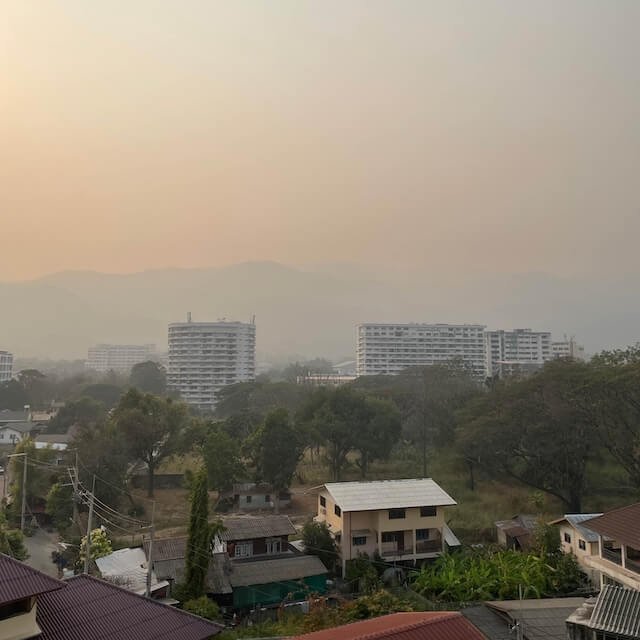
Whether you’re a long term expat or a short term traveler, certain themes resonate in nearly every account of Chiang Mai’s burning season:
- Health Concerns: From respiratory issues to headaches and fatigue, the physical effects of prolonged exposure to PM2.5 pollution are hard to ignore.
- Restricted Lifestyles: The outdoor activities that make Chiang Mai so appealing are often inaccessible during the smoky months. That’s not to say you can’t do outdoor activities, but after a few days in the smoke your body’s internal warning system will tell you not to.
- A Lasting Impression: Even those who prepare for the burning season find it leaves a mark. Many adjust their future plans to avoid it altogether, ensuring their next visit to Chiang Mai doesn’t coincide with the haze.
A Reality Check for Visitors
The firsthand experiences of those who’ve weathered Chiang Mai’s burning season serve as both a warning and a guide.
Whether you plan to stay or skip town, knowing what to expect and how others have coped can help you make the most of your time in the city, even when the skies aren’t blue.
Pro Tip: If you’re traveling during the burning season, always have a backup plan. Book flexible accommodations, and consider destinations within easy reach where air quality is better.
Coping Strategies for Staying in Chiang Mai During Burning Season
Staying in Chiang Mai during the burning season doesn’t have to feel like a survival challenge, though it does require a bit of preparation.
With the right strategies, you can protect your health, maintain your routines, and make the most of your time indoors.
Here’s how to stay comfortable and safe under Chiang Mai’s hazy skies.
Invest in Air Purifiers
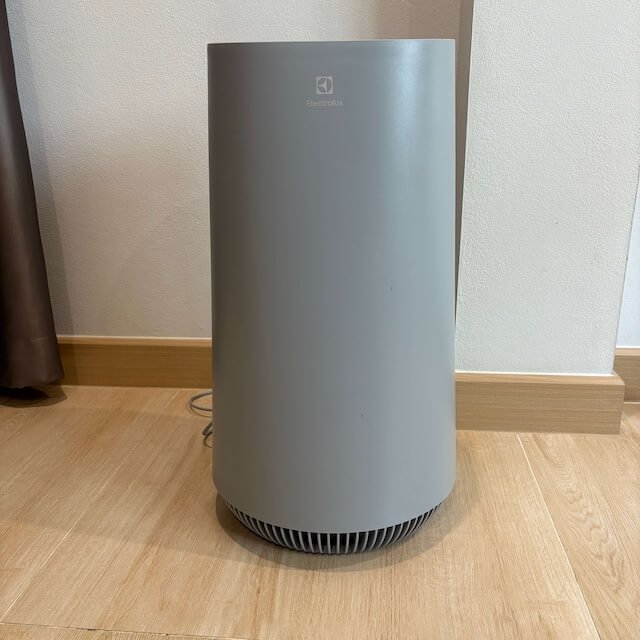
Your number one defense against the burning season is clean indoor air.
A high quality HEPA air purifier is essential for filtering out harmful PM2.5 particles that seep indoors.
Popular brands like Xiaomi and Philips offer reliable options, with prices ranging from 3,000 to 10,000 THB depending on the room size and filtration capacity.
For larger spaces, consider investing in multiple units or a more powerful model. The upfront cost may seem steep, but your lungs (and long term health) will thank you.
Pro Tip: Regularly check and replace filters to keep your air purifier running efficiently throughout the season.
Seal Your Living Space
Don’t let the smoky air sneak into your sanctuary.
Sealing windows and doors is an effective way to minimize indoor pollution. Use weather strips or foam tape to close gaps around windows and door frames for extra protection from the outside air.
If your home has air conditioning, clean the filters and use it in recirculation mode to avoid drawing in polluted air from outside.
Quick Fix: If sealing isn’t an option, hang wet towels near windows to trap some of the particles that might drift inside, a budget friendly trick that can make a noticeable difference.
Stay Active Indoors
Chiang Mai’s outdoor charm might be off limits during the burning season, but that doesn’t mean you have to abandon your fitness routine.
Many gyms in the city are equipped with air filtration systems, making them a safe and comfortable option for working out.
Alternatively, turn your living room into a mini studio with online fitness classes or yoga sessions. Fitness apps and youtube instructors are your friend here and burning season is the perfect time to learn new skills indoors.
Pro Tip: Avoid intense physical exertion if the indoor air quality is still bad, as even moderate exposure to pollutants can be harmful when breathing heavily.
Monitor Air Quality
Knowledge is power, especially during the burning season. Apps like AirVisual, Plume Labs, and BreezoMeter provide real time air quality updates, allowing you to plan your day around safer times for outdoor errands.
Early mornings or just after a brief rain shower often have the cleanest air, giving you short windows to grab essentials or stretch your legs outside.
Pro Tip: Set up app notifications for AQI changes so you can act quickly if conditions improve or worsen.
Adapt and Thrive
While staying in Chiang Mai during the burning season does come with challenges, being proactive can make all the difference.
By creating a safe, comfortable indoor environment and adapting your daily routines, you’ll find it’s possible to weather the season without sacrificing your health or sanity.
Pro Tip: Stock up on entertainment options like books, games, or hobbies to make the most of your indoor time. Sometimes, the burning season can be an unexpected chance to slow down and focus on personal growth and well being.
Escape Chiang Mai Burning Season: A Holiday Opportunity
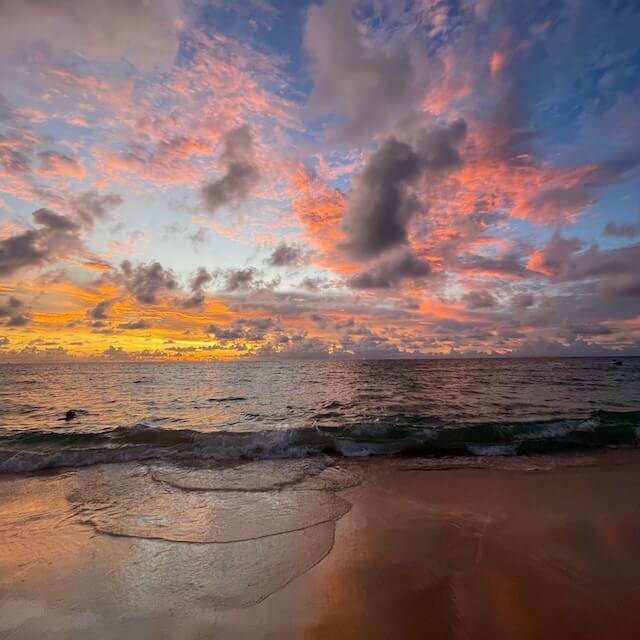
When Chiang Mai’s air turns hazy and unbreathable, sometimes the best solution is simply to leave.
For many residents and expats, the burning season becomes an annual excuse for an extended holiday, swapping smoky skies for pristine beaches or vibrant new destinations.
If you’re considering an escape, here’s how to make it happen.
Popular Destinations
Southern Thailand is the go to refuge for many escaping the burning season.
With clear blue skies, white sandy beaches, and fresh sea breezes, spots like Phuket, Koh Samui, Koh Lanta and Krabi are irresistible alternatives to the smoky north.
For those seeking a change of scenery beyond Thailand, nearby countries such as Vietnam, Bali and Malaysia offer a variety of travel experiences along with improved air quality.
In Bali, for example, you’ll find tranquil retreats and wellness focused escapes, while Vietnam’s lively cities and lush countryside are perfect for exploration.
Pro Tip: Check AQI levels for your destination before booking. Even some regional spots can experience haze, especially if they’re downwind of burning zones.
Budget Considerations
Planning ahead is the key to making your escape affordable.
Early bookings for flights and accommodations can save you significant costs, especially if you’re aiming for popular destinations during peak travel months.
To further offset expenses, consider subletting your Chiang Mai rental or negotiating with your landlord to pause your lease during your absence.
Many expats have successfully sublet their apartments to short term travelers or other digital nomads, effectively cutting their travel costs in half. With that being said, check the terms of your lease before attempting this strategy as it may be a breach of the terms and conditions.
Pro Tip: Websites like Airbnb or Facebook expat groups can help you find subletting opportunities quickly.
Benefits of Escaping
Leaving Chiang Mai during the burning season isn’t just about escaping bad air; it’s about reclaiming your quality of life.
- Physical Health: Clean air and outdoor activities will do wonders for your respiratory system after weeks of pollution exposure.
- Mental Health: A change of scenery, whether it’s lounging on a tropical beach or exploring a bustling new city, can break the monotony of indoor living and lift your spirits.
- Opportunity for Exploration: The burning season is a perfect excuse to tick a dream destination off your bucket list or revisit a favorite getaway spot.
Turn the Challenge into an Opportunity
The burning season doesn’t have to be a period of dread.
By turning it into an opportunity for travel, you can turn an environmental challenge into a personal adventure.
Whether it’s sipping cocktails on the beaches of Koh Samui or discovering a new country, your escape could be the highlight of your year.
Pro Tip: Start planning your escape by mid January to secure the best deals and options for accommodations and flights before demand spikes.
Practical Advice for Air Quality Sensitive Individuals
For those who are particularly vulnerable to air pollution, such as individuals with asthma, allergies, or other respiratory issues, the burning season in Chiang Mai can be more than just an inconvenience; it can pose serious health risks.
Taking proactive measures can help mitigate the effects of poor air quality and safeguard your well being.
Short Term Tips: Protecting Yourself Day-to-Day
When air quality takes a nosedive, small daily adjustments can make a big difference:
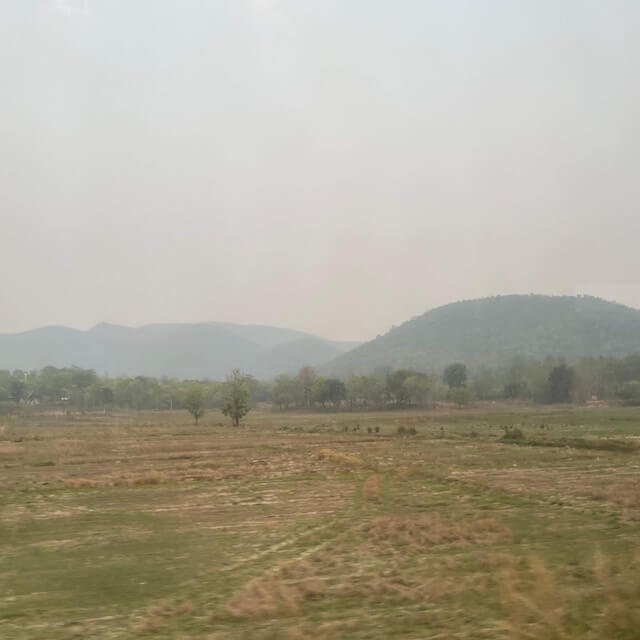
- Wear an N95 Mask Outdoors: Standard cloth or surgical masks won’t cut it when dealing with PM2.5 particles. A properly fitted N95 mask is essential for blocking out harmful pollutants during trips outside.
- Stay Hydrated: Drinking plenty of water helps flush out toxins and keeps your body better equipped to handle pollution related stress.
- Eat Antioxidant Rich Foods: Incorporate foods like leafy greens, berries, nuts, and fish into your diet. Antioxidants combat inflammation and boost your body’s resilience against pollutants.
- Time Outdoor Activities Wisely: Check air quality apps for real time data and schedule essential errands or activities during times when AQI levels are lower, such as early mornings or after a rare rain shower.
- Use an Air Purifier Indoors: Ensure your living space remains a safe haven with the use of a high quality air purifier.
Long Term Considerations: Planning for Your Health
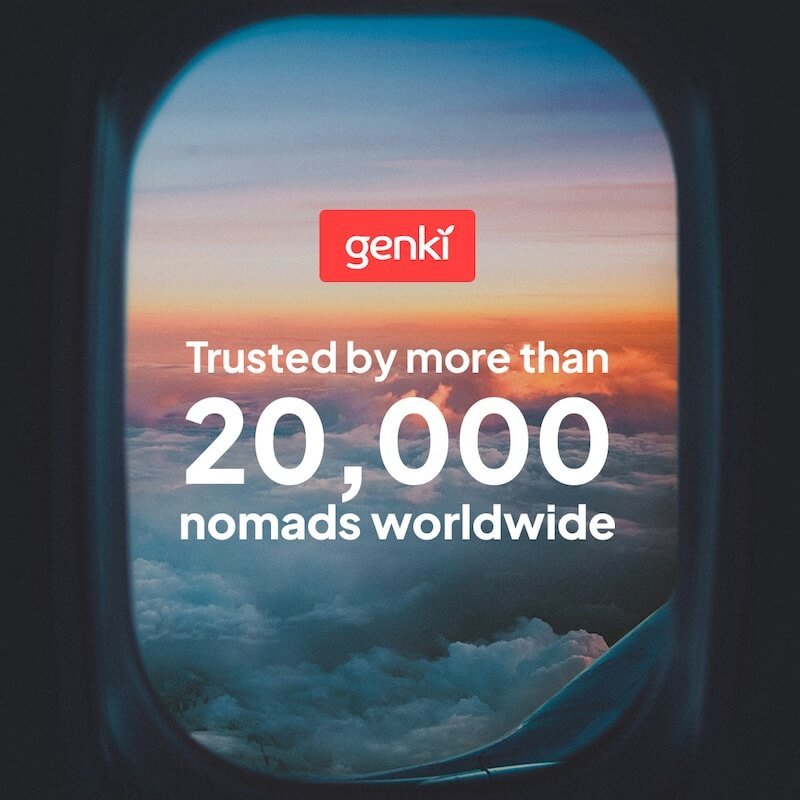
If you’re in Chiang Mai for an extended stay or living here permanently, more substantial adjustments might be necessary to protect your long term health:
- Regular Medical Check Ups: Make it a priority to monitor your respiratory and cardiovascular health, especially if you’re already at risk or have pre existing conditions. Early detection of issues caused by prolonged exposure to pollution is key to effective management.
- Consider Relocation During Peak Months: If your health is significantly impacted by the burning season, it might be worth exploring relocation options during the worst months (February to April). Temporary stays in regions with cleaner air can provide much needed relief and reduce cumulative exposure.
Weighing the Decision: Staying or Leaving
The choice to stay or leave during the burning season ultimately depends on your personal health risks and lifestyle preferences.
While Chiang Mai offers many conveniences and charms, the air quality during this period can be a dealbreaker for those with heightened sensitivity or health conscious individuals.
Pro Tip: For those who decide to stay, it’s essential to maintain a positive mental outlook. Indoor hobbies, virtual social interactions, and finding small daily routines can help keep your spirits up despite the challenges.
Your Health Comes First
If you’re among the sensitive groups, the burning season requires more than just an awareness of the risks, it demands a proactive approach to minimize exposure and protect your health.
By combining daily precautions with long term planning, you can navigate this season with confidence and minimize its impact on your life.
Pro Tip: Keep an emergency kit ready, including spare N95 masks, an air quality monitor, and medications for respiratory conditions, so you’re prepared for sudden spikes in pollution levels.
Conclusion
Chiang Mai’s burning season might feel daunting at first glance, but with the right approach, it’s far from insurmountable.
Whether you choose to ride it out with air purifiers and indoor routines or treat it as a well timed excuse for an adventurous getaway, the key lies in preparation and informed decision making.
This annual phenomenon doesn’t define Chiang Mai, it’s just one aspect of life in a city that offers so much. By planning ahead and taking proactive steps to protect your health, you can navigate this challenging season while still appreciating everything Chiang Mai has to offer.
And remember, this article is just the beginning. For more practical advice and tips for living your best life in Chiang Mai, explore our other articles like why people are moving to Chiang Mai. Knowledge is power, and the more you know, the better equipped you’ll be to make the most of your time in this remarkable city, even when the skies turn smoky.
Your health, happiness, and adventure don’t have to stop when the burning season starts.
FAQ: Chiang Mai Burning Season – Your Essential Questions Answered
What is Chiang Mai’s burning season?
Chiang Mai’s burning season occurs annually, typically from late February to mid April. It is characterized by hazardous air quality due to agricultural burning, particularly slash and burn farming practices in Thailand and neighboring countries like Myanmar and Laos. The smoky haze can significantly impact health, travel plans, and daily life in the city.
When is the worst time for air pollution in Chiang Mai?
The peak of Chiang Mai’s burning season is usually in March. During this time, the Air Quality Index (AQI) often reaches hazardous levels, with PM2.5 particles far exceeding safe limits. If you’re sensitive to air pollution, this is the month to avoid visiting or living in Chiang Mai.
How does the burning season affect health?
The burning season can cause respiratory issues, eye irritation, and fatigue. Prolonged exposure to high PM2.5 levels increases the risk of cardiovascular and respiratory diseases. Those with pre-existing conditions, such as asthma, are particularly vulnerable and should take precautions like staying indoors and using air purifiers.
Can you still visit Chiang Mai during the burning season?
Yes, but it’s not recommended unless you’re well prepared. If visiting during this time, plan to stay indoors with proper air filtration, limit outdoor activities, and monitor air quality closely. Alternatively, consider using Chiang Mai as a temporary stopover and escaping to cleaner destinations like Southern Thailand or neighboring countries.
What is PM2.5, and why is it dangerous?
PM2.5 refers to fine particulate matter with a diameter of 2.5 micrometers or smaller. These particles are small enough to penetrate deep into the lungs and bloodstream, causing respiratory and cardiovascular issues. During Chiang Mai’s burning season, PM2.5 levels often reach hazardous levels, making it essential to take precautions.
What causes the burning season in Chiang Mai?
The burning season is primarily caused by agricultural slash and burn practices, where farmers burn crop stubble to prepare fields for planting. Chiang Mai’s valley geography traps the smoke, exacerbating the haze. Urban pollution and cross border burning from Myanmar and Laos also contribute to the problem.
What’s the best way to check air quality in Chiang Mai?
Apps like AirVisual, Plume Labs, and BreezoMeter provide real time air quality data for Chiang Mai. These apps offer AQI readings, pollution forecasts, and health recommendations. For the most accurate updates, consider using an AQI monitoring device at home.
How can I protect myself from air pollution during the burning season?
- Use a high quality air purifier indoors.
- Wear an N95 mask when venturing outside.
- Seal windows and doors to prevent smoke infiltration.
- Avoid outdoor exercise or physical exertion.
- Stay hydrated and consume antioxidant rich foods to combat pollution related stress.
Where can I escape the burning season in Thailand?
The Southern Thai islands, such as Koh Samui, Phuket, and Krabi, are popular escape destinations with cleaner air and beautiful beaches. International destinations like Bali, Vietnam, and Malaysia are also excellent options for avoiding the haze.
Is air pollution in Chiang Mai getting worse each year?
Air pollution levels during Chiang Mai’s burning season vary yearly depending on agricultural practices, weather, and cross border burning. While some years are better than others, the overall trend remains concerning, with no long term solutions in place yet.
How do locals and expats cope with the burning season?
Most expats cope by staying indoors, using air purifiers, and planning getaways during the peak months. Many also invest in home sealing measures. However the world cannot stop and many locals will continue living their lives as normal as they have no other option.
Are masks effective against air pollution in Chiang Mai?
Yes, N95 masks are effective in filtering out PM2.5 particles. Standard cloth or surgical masks, however, do not provide adequate protection against the fine particles present during the burning season.
Is it cheaper to visit Chiang Mai during the burning season?
Yes, some accommodations and travel options may be cheaper due to reduced demand during the burning season. However, the health risks and limited outdoor activities often outweigh the cost savings for many travelers.
Can air purifiers help during the burning season?
Absolutely. Air purifiers with HEPA filters are essential for maintaining clean indoor air during the burning season. They are highly effective at removing PM2.5 particles and ensuring a safer environment at home or work.
What alternatives exist to slash and burn farming?
Sustainable alternatives, like mulching, crop rotation, and no burn techniques, can help reduce the need for slash and burn farming. However, implementing these methods requires education, financial support, and government incentives for farmers.
Does the burning season only affect Chiang Mai?
No, the burning season impacts most northern provinces of Thailand, including Chiang Rai and Mae Hong Son (Pai). Neighboring countries like Myanmar and Laos also experience similar conditions, contributing to regional haze. The effect of the burning season can be felt throughout mainland Thailand during this time of year.
What are the long term solutions to Chiang Mai’s burning season?
Long term solutions include promoting sustainable agricultural practices, implementing stricter regulations, cross border cooperation, and educating farmers about alternatives to burning. Public pressure and increased environmental awareness are also crucial for driving change.


